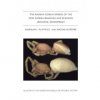About this book
A new genus, Niarchos, is established for a group of 22 new species from the Andean regions of Colombia, Ecuador, and Peru. Although the males of most of these species are obviously gamasomorphines, with a well-developed dorsal abdominal scutum, that scutum is reduced, in the males of two species, to just a narrow, sclerotized, longitudinal strip that covers only the cardiac area and is fused anteriorly to the epigastric scutum. Females of all species, in contrast, show no trace whatever of a dorsal abdominal scutum, have only short and lightly sclerotized epigastric and postepigastric scuta, and could therefore easily be misidentified as oonopines. Four species groups are recognized within the genus, each characterized by a distinctive form of male palp; the four groups are united by the presence of a triangular, posteriorly directed anterior projection on the male endites as well as by the sexual dimorphism in scutum morphology, reduced posterior eyes, and an unusual leg spination pattern (with spines absent on the anterior legs and present only as slightly enlarged but darkened macrosetae on tibiae, and sometimes metatarsi, III and/or IV).
The cotopaxi group includes eight species, six from western Ecuador (N. cotopaxi, N. barragani, N. keili, N. baehrae, N. tapiai, and N. elicioi) and two from southwestern Colombia (N. wygodzinskyi and N. florezi); males of this group are united by a unique retroventral projection on the male palpal bulb. The scutatus group includes seven species from eastern Ecuador (N. scutatus, N. ramirezi, N. bonaldoi, N. vegai, N. santosi, N. michaliki, and N. ligiae); males of this group are united by an embolar base bent at a right angle at about half its length. The loja group includes two species from southern Ecuador and northern Peru (N. loja and N. foreroi) in which the embolus is elongated.
The palenque group includes two species from western Ecuador (N. palenque and N. facundoi) in which the distal portion of the embolus is short and translucent. Three Ecuadorean species known only from females (N. grismadoi, N. matiasi, and N. rheimsae) are left unplaced, but apparently represent at least one additional, relatively widespread species group. A second new genus, Scaphios, is described for a group of seven new species from Ecuador (S. yanayacu, S. napo, S. cayambe, S. wagra, S. jatun, S. orellana, and S. puyo), plus one species from southwestern Colombia (S. planada), that resemble those of Niarchos in dorsal scutum morphology and leg spination, but have fully developed posterior eyes, a laterally directed anterior projection on the male endites, and a subdistally originating, sinuous embolus. Males of S. orellana also have reduced dorsal and postepigastric abdominal scuta, but (unlike the Niarchos males with reduced scuta) the dorsal scutum is separate from the epigastric scutum. A shared pattern of sexual dimorphism in ventral pedicel sclerite morphology suggests that Niarchos and Scaphios are sister groups.
Customer Reviews










































